Oklahoma’s outdoors and homes are home to a wide variety of insects and arachnids, some of which can bite, sting, or cause allergic reactions. Awareness is essential to avoid unexpected encounters.
From venomous spiders to aggressive ants and stinging wasps, many dangerous bugs hide in dark corners, gardens, or grassy areas. Knowing how to identify them helps prevent painful or harmful interactions.
This guide covers 18 dangerous bugs in Oklahoma, with clear identification tips, pictures, and safety advice. Whether exploring nature or working around your home, these tips can help you stay safe.
Different Types Dangerous Bugs in Oklahoma
Brown Recluse Spider
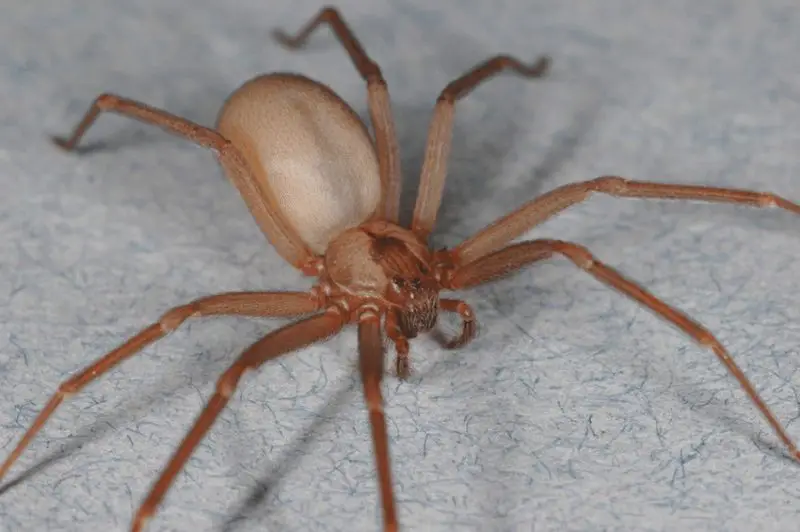
The Brown Recluse Spider is one of Oklahoma’s most infamous spiders due to its venomous bite. Adults are typically 1–1.5 inches in size including their legs and are light to medium brown in color. Their most distinctive feature is the dark violin-shaped marking on their back, with the neck of the violin pointing toward the abdomen.
Brown recluse spiders are nocturnal hunters, hiding in undisturbed areas like attics, closets, basements, and woodpiles during the day. They rarely leave their hiding spots unless searching for prey or mates, making encounters relatively infrequent but dangerous.
Their bite is often painless at first, but venom can cause severe local tissue damage over time. Symptoms may include redness, blistering, and necrotic lesions. In rare cases, systemic reactions like fever, nausea, or chills may occur.
They primarily feed on small insects such as crickets, cockroaches, and other arthropods. Their hunting strategy involves ambushing prey rather than building webs, which makes them stealthy predators inside homes.
Prevention involves reducing clutter, sealing cracks, and wearing gloves when handling stored items. If bitten, it’s crucial to clean the wound and seek medical attention promptly.
Black Widow Spider
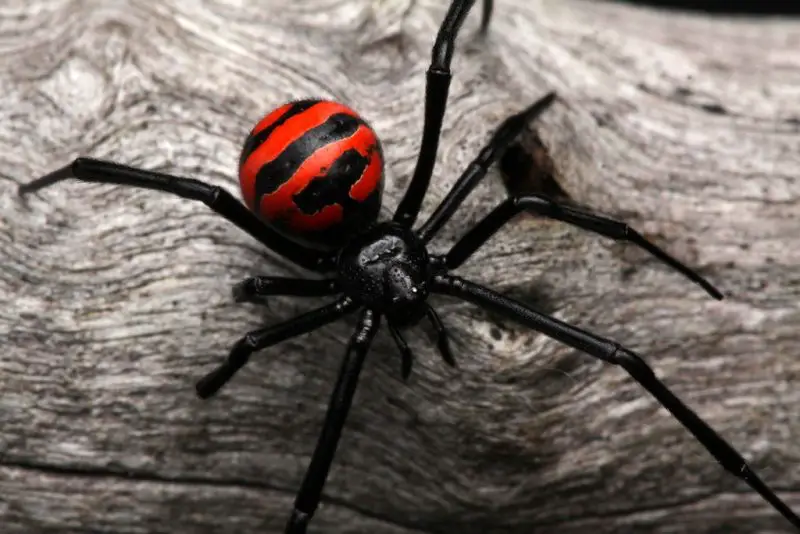
The Black Widow Spider is easily recognizable by its shiny black body and the distinctive red hourglass marking on its underside. Adult females are about 1.5 inches including legs, while males are smaller and less venomous.
These spiders prefer dark, secluded areas such as sheds, woodpiles, garages, and dense vegetation. They build irregular, sticky webs where they wait for unsuspecting prey. Unlike brown recluses, black widows are more aggressive when threatened.
Their venom is neurotoxic, which can cause severe pain, muscle cramps, and nausea. Bites are rarely fatal to healthy adults but can be serious for young children, the elderly, or those with compromised immune systems.
Black widows feed on insects and other small arthropods caught in their webs. They inject venom to immobilize prey and then consume it over several hours.
To avoid bites, keep areas tidy, wear gloves when reaching into dark corners, and avoid disturbing webs. Prompt medical attention is advised if bitten.
American Dog Tick
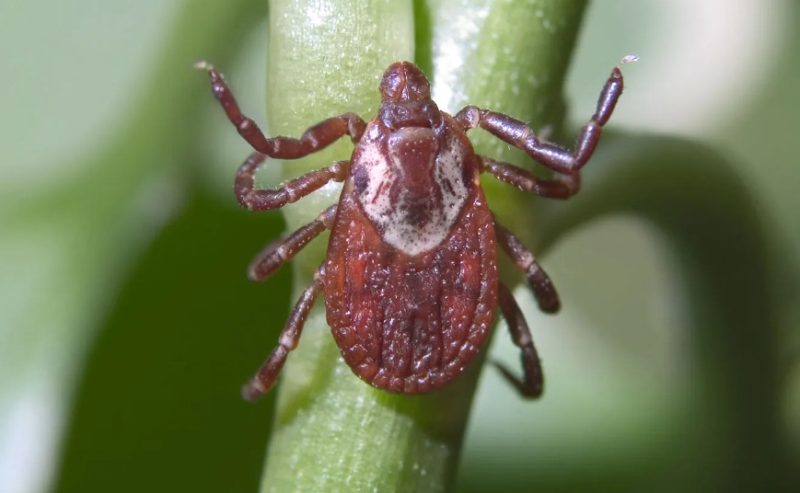
The American Dog Tick is a common tick species in Oklahoma, recognized by its reddish-brown body and ornate white markings on the back of adult females. Adults are about 0.5 inches long when unfed but can swell significantly after feeding.
This tick prefers grassy fields, trails, and wooded edges, attaching to hosts like dogs, livestock, and humans. They are most active during spring and summer months, particularly in areas with dense vegetation.
American dog ticks are vectors for serious diseases, including Rocky Mountain spotted fever and tularemia. Bites often cause localized redness, swelling, and itching, while disease transmission can lead to fever, headache, and other systemic symptoms.
They feed by attaching firmly to the host and consuming blood over several days. Their slow feeding allows time for potential pathogen transmission.
Prevention involves using tick repellents, wearing long sleeves and pants, and checking for ticks after outdoor activities. Removing attached ticks promptly reduces the risk of infection.
Lone Star Tick
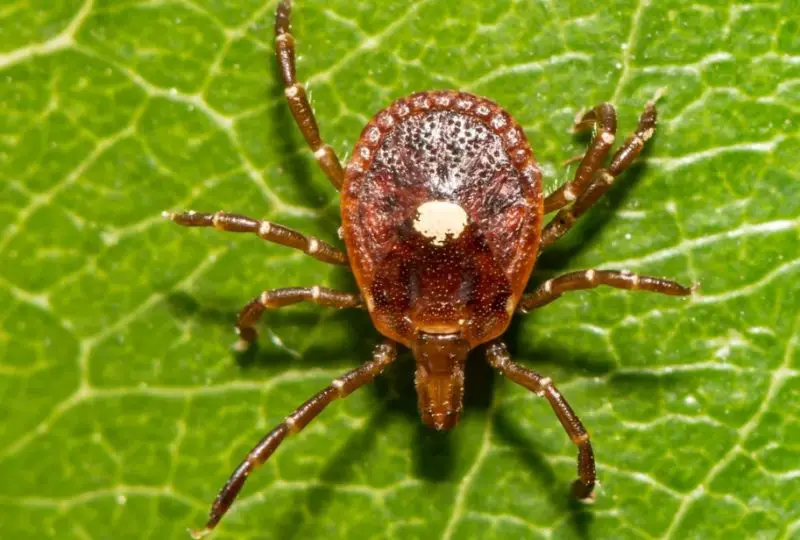
The Lone Star Tick is another common tick species in Oklahoma, identifiable by the distinctive white “lone star” spot on the back of adult females. Males have scattered white markings but no central spot.
These ticks inhabit forests, brushy areas, and grassy fields, actively seeking hosts such as deer, dogs, and humans. They are aggressive hunters and can crawl quickly onto passing animals or people.
Lone star ticks are known carriers of ehrlichiosis and can trigger the alpha-gal meat allergy, which causes red meat allergy in humans after repeated bites. Symptoms from bites include itching, redness, fever, and muscle aches.
They feed on blood at all life stages and may transmit pathogens while feeding. Their larvae, nymphs, and adults all actively seek hosts, increasing the risk of bites.
Preventive measures include repellents containing DEET, permethrin-treated clothing, and performing thorough tick checks after outdoor exposure. Prompt removal reduces risk of infection and allergic reactions.
Western Honeybee
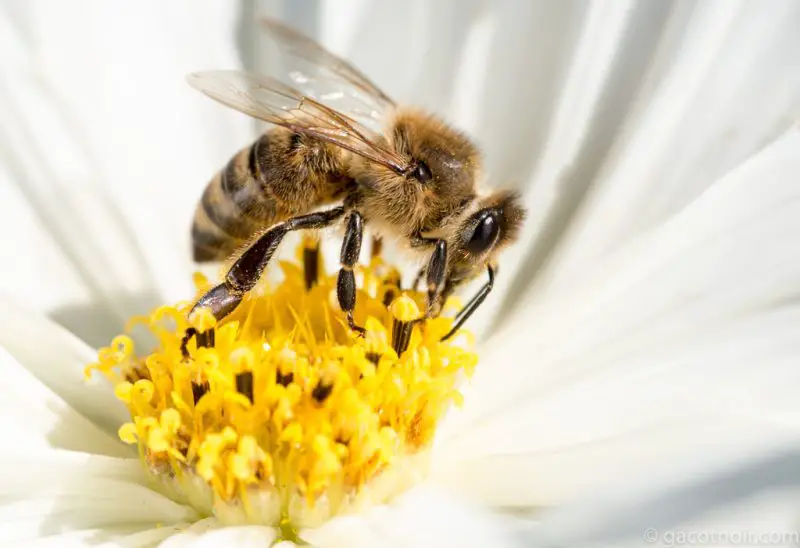
The Western Honeybee is widely known for its role in pollination, but it can be dangerous for those allergic to bee venom. Adult bees are about 0.5 inches long with golden-brown and black striped bodies.
Honeybees are social insects that live in hives and are generally not aggressive unless threatened. They will defend their hive vigorously, stinging intruders to protect the colony.
Bee stings inject venom that can cause pain, redness, and swelling. In allergic individuals, stings can trigger severe reactions, including anaphylaxis, which requires immediate medical attention.
Honeybees feed primarily on nectar and pollen, which they collect from flowers. Their stinger is barbed, so after stinging, the bee often dies because the stinger remains embedded in the skin.
To reduce risk, avoid disturbing hives, stay calm around bees, and use protective clothing when beekeeping. In case of stings, remove the stinger quickly and apply first aid or seek medical help if allergic symptoms develop.
Paper Wasps
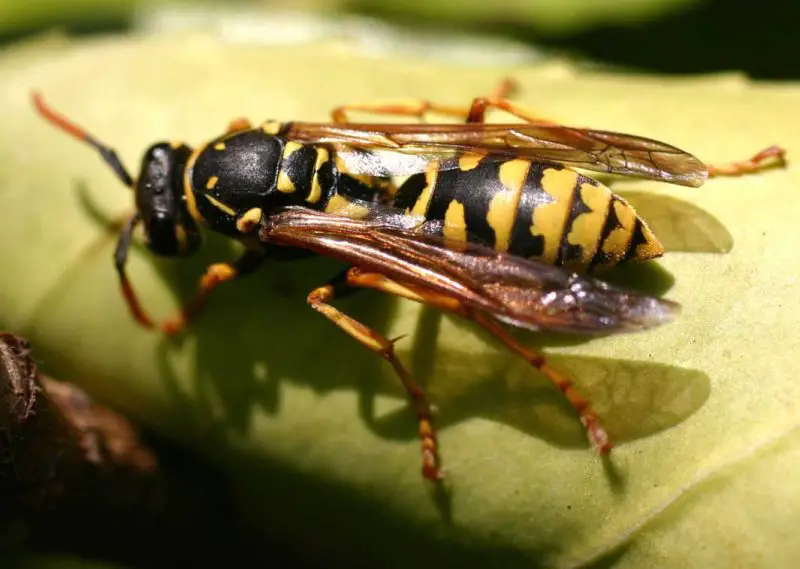
Paper Wasps are slender, long-legged insects known for their reddish-brown or dark bodies with yellow markings. They build open, umbrella-shaped nests made of chewed plant fibers, often under eaves, porch ceilings, or tree branches.
These wasps are generally not aggressive but will sting repeatedly if they feel their nest is threatened. Unlike honeybees, they can sting multiple times without dying. Their stings inject venom that can cause sharp pain, swelling, and itching.
Paper wasps feed on nectar and also capture caterpillars or other soft-bodied insects to feed their larvae. This makes them beneficial for natural pest control in gardens, but their proximity to human activity can be risky.
They are most active during warmer months, particularly late spring through summer. Paper wasps can become territorial around their nests, especially if disturbed suddenly.
Prevention involves removing old nests, sealing gaps in eaves, and wearing gloves when working near potential nesting sites. If stung, clean the area, apply cold packs, and monitor for allergic reactions.
Hornets (including Bald-Faced Hornet)
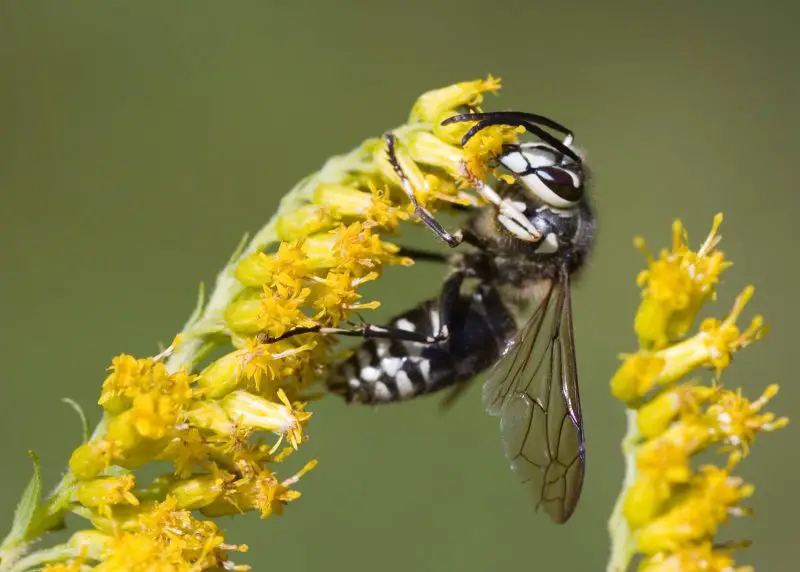
Hornets, including the Bald-Faced Hornet, are large wasps that can deliver extremely painful stings. Adult bald-faced hornets are black with white markings on the face and thorax, measuring about 0.75–1 inch long.
They construct large, football-shaped paper nests in trees, shrubs, or under eaves. Hornets are highly protective of their colonies and can sting multiple times when provoked.
Their venom causes intense pain, swelling, and redness. In sensitive individuals, stings can lead to severe allergic reactions, sometimes requiring emergency treatment.
Hornets feed on insects and sugary substances like nectar or fruit juices. They are predators of garden pests, but their aggressive defense behavior makes them hazardous to humans.
Avoiding sudden movements near nests and not disturbing them is crucial. Protective clothing and professional removal are recommended if nests are near human activity.
Red Imported Fire Ant
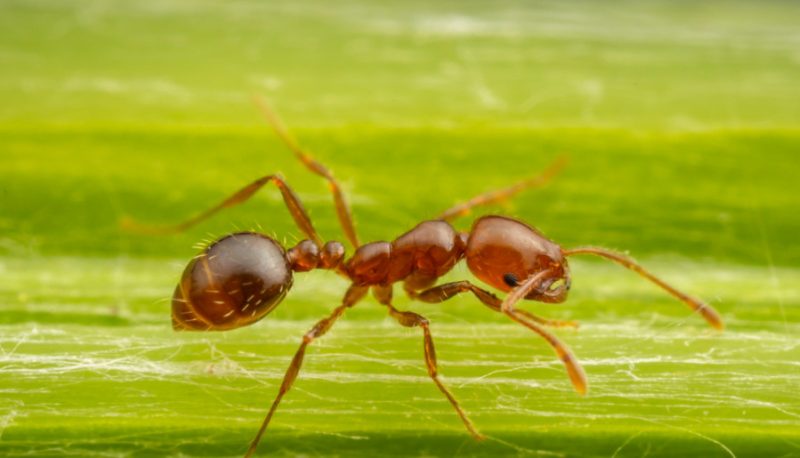
The Red Imported Fire Ant is a small but dangerous insect, typically reddish-brown with darker abdomens. Workers measure about 0.1–0.25 inches, and they form large mound colonies in lawns, fields, and open areas.
Fire ants are aggressive and will swarm and sting repeatedly if their mound is disturbed. Their venom causes a burning sensation, raised welts, and sometimes pustules, giving them the name “fire ants.”
Bites can be more serious for allergic individuals, causing systemic reactions or even anaphylaxis. Children and pets are particularly vulnerable to severe reactions.
Fire ants feed on seeds, insects, and other small invertebrates, playing a role in local ecosystems, but their aggressive nature makes them a significant pest.
To reduce risk, avoid stepping on mounds, wear shoes in infested areas, and use insecticides or professional pest control for severe infestations. Prompt treatment of stings reduces pain and prevents infection.
Chiggers (Trombiculid Mites)
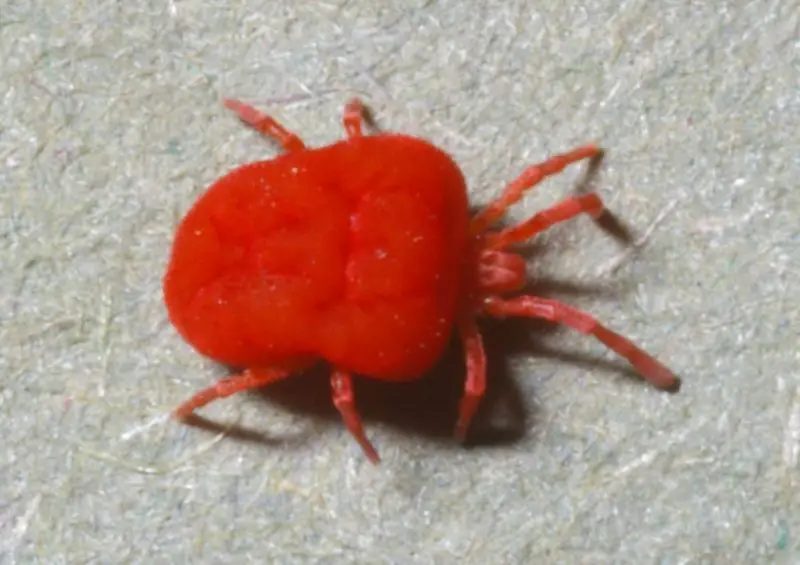
Chiggers are tiny, red larvae of mites that live in tall grasses, weeds, and brushy areas. They are barely visible to the naked eye, making them easy to overlook until after they bite.
Chiggers attach to the skin and inject digestive enzymes that break down skin cells, causing intense itching and red bumps. They do not burrow into the skin but remain attached for several hours.
Bites can lead to secondary infections if scratched excessively. While chiggers are not known to transmit serious diseases in Oklahoma, their bites are extremely uncomfortable and can linger for days.
Chiggers feed on animal hosts, including humans, during their larval stage. Adults are free-living predators feeding on small arthropods in the soil.
Preventive measures include wearing long pants and socks in infested areas, using insect repellents, and showering promptly after outdoor exposure. Topical treatments can relieve itching and irritation.
Striped Bark Scorpion
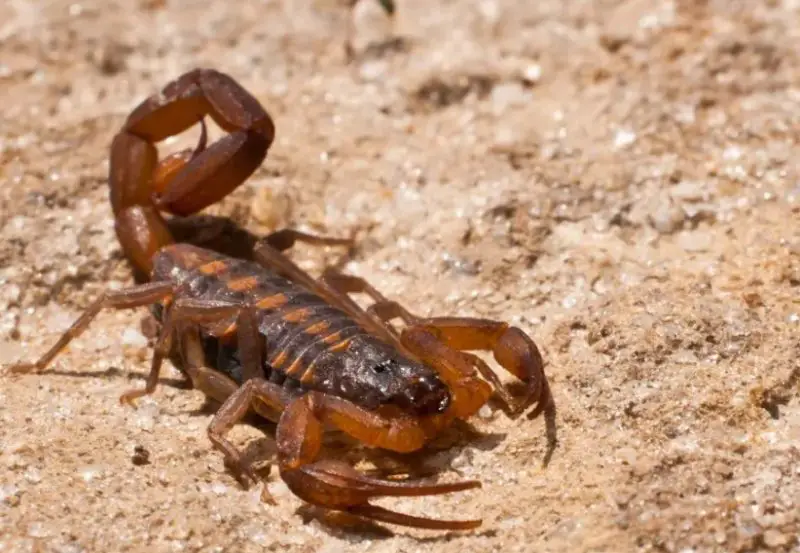
The Striped Bark Scorpion is a small scorpion species found in Oklahoma, typically 2–3 inches long with light brown bodies and dark stripes along their backs.
They are nocturnal and hide under bark, rocks, or debris during the day. Human encounters are rare but can occur in yards, garages, or other areas near their natural habitat.
Their sting injects venom that causes localized pain, numbness, and swelling. While rarely fatal, it can be dangerous for children, elderly people, or allergic individuals.
Striped bark scorpions feed on insects and spiders, using their pincers to capture prey before stinging. Their venom helps subdue prey quickly.
Preventive tips include sealing gaps in homes, removing debris, wearing gloves when handling firewood or garden materials, and monitoring children and pets outdoors. Stings should be cleaned and treated promptly, with medical attention if severe symptoms occur.
Kissing Bug (Triatomine Bug)
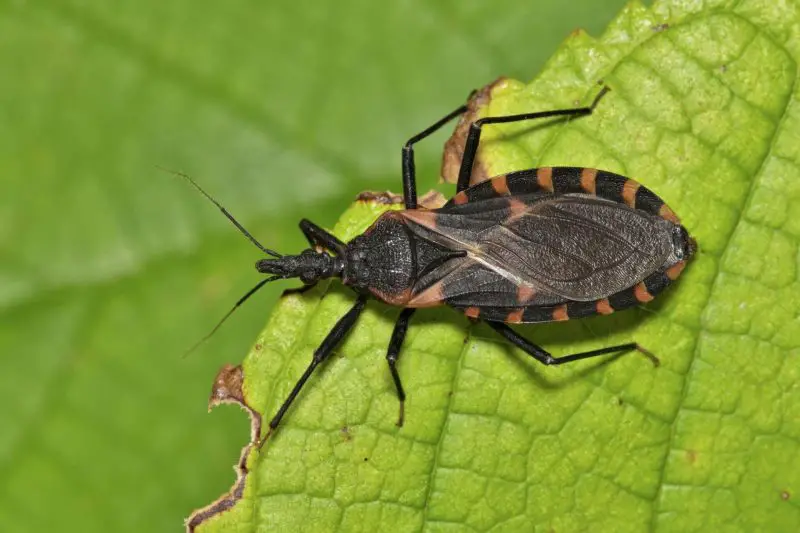
The Kissing Bug is a blood-sucking insect, typically 0.5–1 inch long, with a dark, flat body and reddish or orange markings along the edges. It gets its name because it often bites around the lips or face of humans while they sleep.
These bugs are nocturnal and hide during the day in cracks, woodpiles, or animal shelters. They are attracted to light at night and can enter homes in search of a blood meal.
Kissing bugs are known carriers of Trypanosoma cruzi, the parasite that causes Chagas disease. While cases in Oklahoma are rare, the potential for infection makes them dangerous. Bites are usually painless but can cause itching, swelling, and redness.
They feed on the blood of mammals, birds, and reptiles. After feeding, they defecate near the bite site, and infection can occur if the feces enter the wound or mucous membranes.
Preventive measures include sealing cracks, using window screens, reducing outdoor lighting near sleeping areas, and inspecting areas where pets or wildlife rest. If bitten, clean the area and monitor for unusual symptoms.
Deer Tick (Blacklegged Tick)
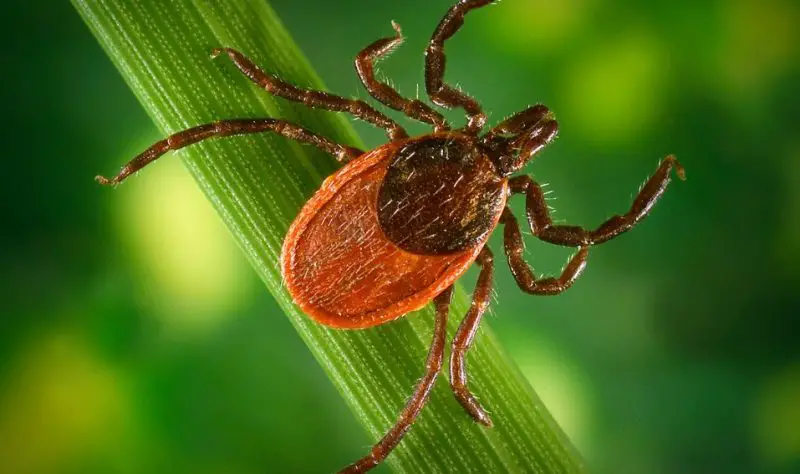
The Deer Tick, also known as the Blacklegged Tick, is a small tick about 0.1–0.2 inches long. Adult females are reddish-brown with dark legs, while males are smaller and darker.
Deer ticks inhabit wooded, grassy, or brushy areas, often attaching to humans, deer, dogs, and other mammals. They are most active in spring and fall but can be found year-round in mild weather.
This tick is a vector for Lyme disease, anaplasmosis, and babesiosis, making it medically significant. Bites are painless but may transmit pathogens after several hours of attachment.
Deer ticks feed on blood at all life stages, and the nymph stage is particularly dangerous because it is small and hard to detect. Removing ticks promptly reduces the risk of infection.
Prevention includes using tick repellents, wearing protective clothing, staying on trails, and performing thorough tick checks after outdoor activities. Seek medical attention if symptoms like fever, rash, or joint pain develop after a bite.
Mud Dauber Wasp
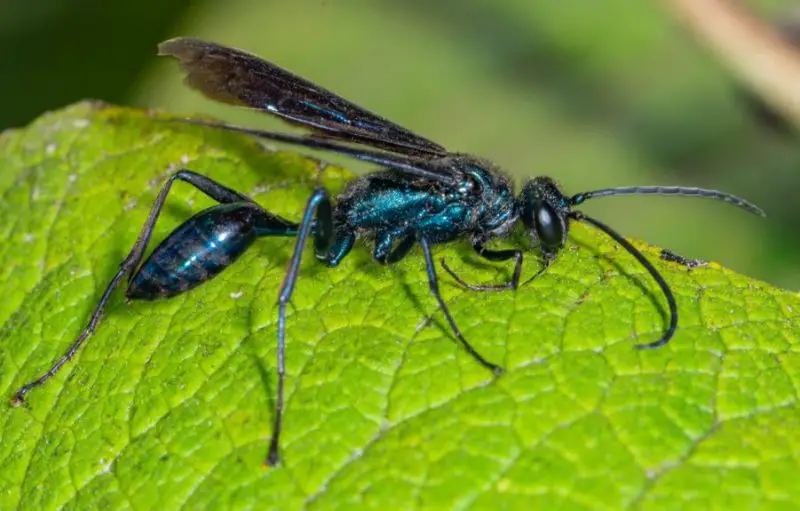
Mud Dauber Wasps are slender, long-bodied insects, usually black or metallic blue, with long legs dangling during flight. They construct cylindrical mud nests in sheltered areas such as eaves, garages, or sheds.
Mud daubers are relatively non-aggressive but will sting if handled or trapped. Their venom is mild compared to hornets or honeybees, causing localized pain and swelling.
They are solitary wasps, unlike social species, and do not defend their nests aggressively. Females provision nests with paralyzed spiders for their larvae to consume.
Mud daubers feed on nectar as adults, while their larvae consume spiders. Their hunting behavior helps control spider populations, but contact with humans may still result in stings.
To minimize risk, avoid disturbing nests, wear gloves when working near potential nesting sites, and remove old nests carefully. Stings should be cleaned, and pain can be relieved with ice or topical treatments.
Blister Beetles
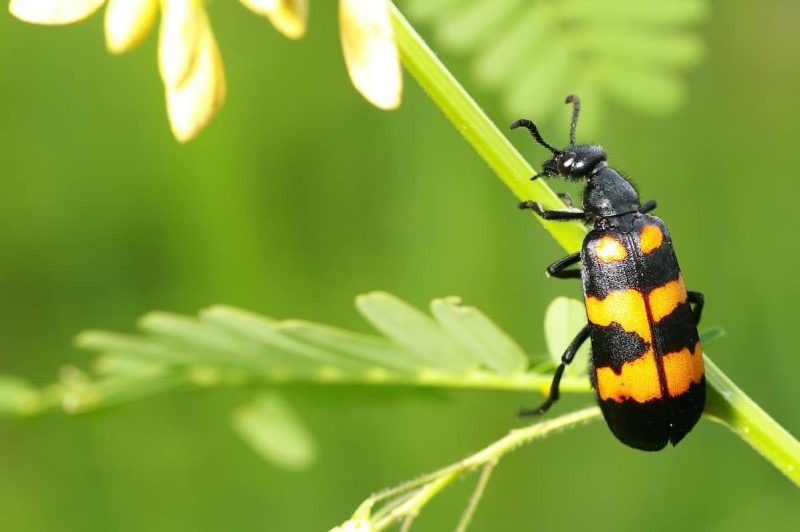
Blister Beetles are elongated insects, often brightly colored in black, yellow, or metallic hues. They secrete a chemical called cantharidin, which can cause painful skin blistering upon contact.
They are found in fields, gardens, and areas with flowering plants. Their presence can be beneficial in controlling grasshopper populations, but their toxin makes them hazardous to humans and livestock.
Blister beetle exposure usually occurs by handling the beetles or crushing them accidentally. Skin contact leads to redness, itching, and blister formation within hours.
These beetles feed on flowers and foliage. While they do not sting or bite, their chemical defense is a potent irritant. Care should be taken when harvesting plants in infested areas.
Preventive measures include wearing gloves and long sleeves when handling plants and washing hands thoroughly after contact. Severe reactions require medical attention.
Horseflies / Deerflies
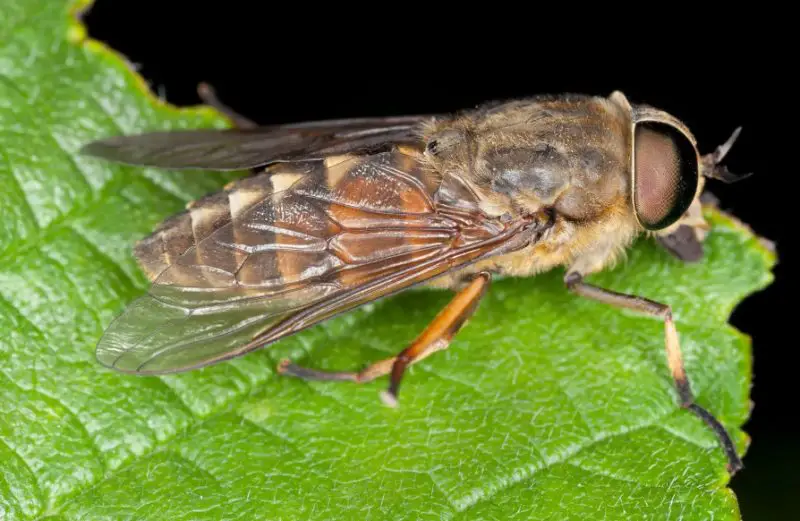
Horseflies and Deerflies are large, fast-flying biting flies, ranging from 0.5 to 1.25 inches long. They have colorful eyes and dark patterned wings, making them easily distinguishable.
They are common near water bodies, pastures, and wooded areas, where they hunt mammals for blood meals. Bites are extremely painful due to their sharp mouthparts that cut the skin.
Horseflies and deerflies can cause localized swelling, itching, and bruising. They may also transmit pathogens such as anthrax or tularemia in rare cases.
These flies feed on blood to obtain proteins for reproduction, while both males and females feed on nectar for energy. Their aggressive feeding behavior can make outdoor activities uncomfortable.
Prevention includes wearing protective clothing, using insect repellents, and avoiding areas with high fly activity. If bitten, clean the wound, apply ice, and monitor for infection or allergic reactions.
Mosquitoes (Culex and Aedes Species)
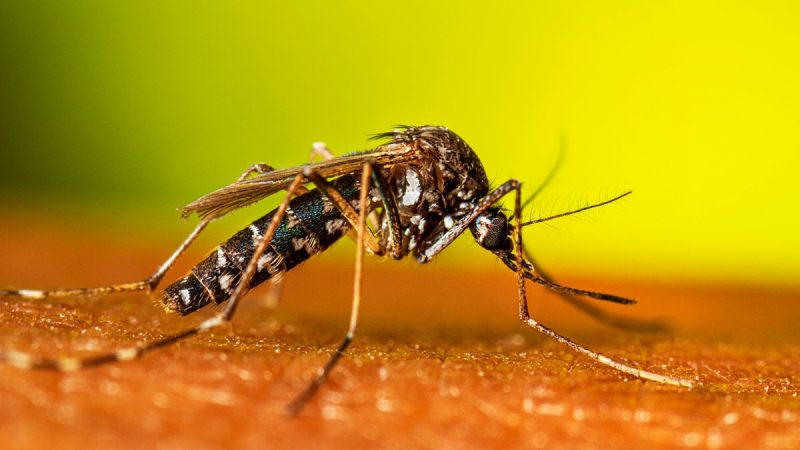
Mosquitoes are small, flying insects, generally 0.1–0.25 inches long, with long legs and a distinctive proboscis for blood-feeding. Culex and Aedes are the most significant species in Oklahoma.
They breed in stagnant water sources, including ponds, birdbaths, clogged gutters, and containers. They are most active at dawn, dusk, and during humid weather.
Mosquitoes are vectors for several serious diseases, including West Nile Virus, Zika virus, and encephalitis. Bites cause redness, swelling, and itching, and disease transmission is a major health concern.
Adult mosquitoes feed on nectar, but females require blood to develop eggs. Males do not bite and feed exclusively on plant nectar.
Preventive measures include eliminating standing water, using insect repellents, installing window screens, and wearing long sleeves and pants during peak mosquito activity. Immediate treatment for severe symptoms is advised.
Centipedes (including House Centipedes)
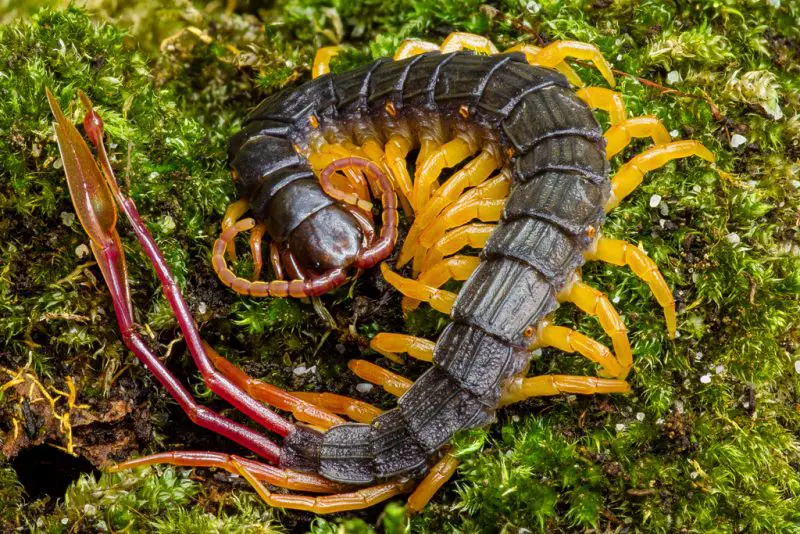
Centipedes are elongated, multi-segmented arthropods with one pair of legs per segment. House centipedes, common in Oklahoma homes, have long, thin legs and can move rapidly across walls, floors, and ceilings. Their appearance often surprises homeowners due to their speed and unusual body shape.
Centipedes possess venomous claws called forcipules, which they use to subdue prey such as spiders, insects, and other small arthropods. When threatened, they can bite humans, injecting venom that causes localized pain, redness, and swelling. Although painful, bites are rarely dangerous to healthy adults.
They are nocturnal hunters and prefer dark, damp environments such as basements, bathrooms, and crawl spaces. During the day, they hide under debris, stones, or logs in outdoor areas or in cluttered indoor spaces.
Centipedes play a beneficial ecological role by controlling other insect populations, including pests like cockroaches. Their presence can be helpful, though their sudden appearance indoors may alarm residents.
Preventive measures include sealing cracks and gaps, reducing moisture, removing clutter, and wearing gloves when handling areas where centipedes may reside. In case of a bite, clean the wound with soap and water, apply ice, and monitor for unusual reactions.
Stink Bugs
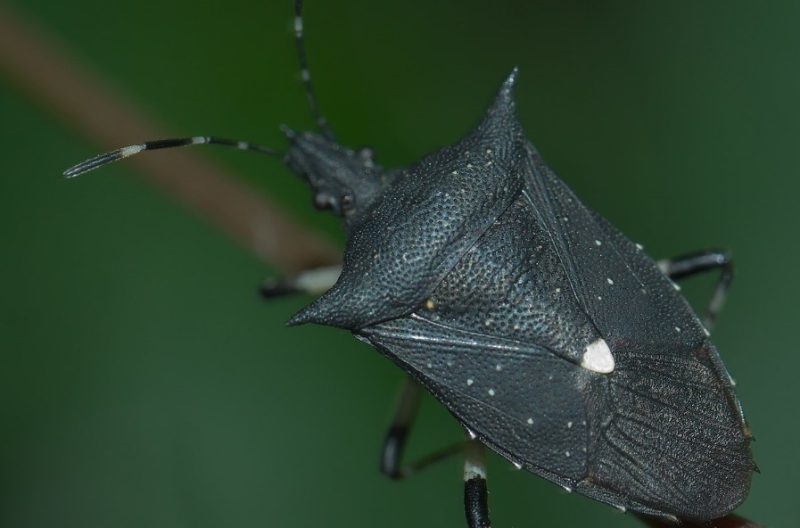
Stink bugs are shield-shaped insects commonly found in gardens, fields, and homes during colder months. They range in size from 0.5 to 0.75 inches and are often brown, green, or mottled, depending on the species. Their distinctive odor is a defense mechanism against predators.
Although stink bugs do not bite or sting, they can release a pungent, unpleasant odor when disturbed or crushed. This chemical can irritate the skin or cause mild allergic reactions in sensitive individuals, such as redness, itching, or a rash.
These insects feed on plant juices by piercing fruits, vegetables, and ornamental plants with their needle-like mouthparts. While their feeding may damage crops, they pose minimal direct danger to humans.
Stink bugs often invade homes seeking warmth and shelter in the fall. They can be found behind window sills, in attics, or under siding. Their presence can be a nuisance due to odor and occasional skin irritation.
Preventive steps include sealing entry points, using door and window screens, removing outdoor debris, and carefully removing stink bugs from indoor spaces without crushing them. Washing hands after contact helps avoid lingering odors or minor skin reactions.
FAQs About Dangerous Bugs in Oklahoma
What is the most dangerous bug in Oklahoma?
The most dangerous bugs include the Brown Recluse Spider, Black Widow Spider, and Red Imported Fire Ant. These species can inject venom that causes severe reactions, and in rare cases, may require medical attention.
How can I prevent bites from venomous spiders?
To prevent bites, reduce clutter in basements, attics, and garages, seal cracks in walls and doors, wear gloves when handling stored items, and be cautious when reaching into dark, undisturbed areas.
Are centipede bites dangerous?
Centipede bites are usually painful, causing redness, swelling, and localized discomfort. They are rarely dangerous to healthy adults, but allergic reactions are possible in sensitive individuals.
How can I protect myself from ticks in Oklahoma?
Use insect repellents containing DEET or permethrin, wear long sleeves and pants in grassy or wooded areas, stay on trails, and perform thorough tick checks after outdoor activities. Prompt removal reduces the risk of disease transmission.
What should I do if stung by a fire ant or wasp?
Clean the area with soap and water, apply ice to reduce swelling, and monitor for allergic reactions. Seek medical attention immediately if there are symptoms like difficulty breathing, severe swelling, or dizziness.
Are mosquitoes in Oklahoma dangerous?
Yes, mosquitoes can transmit diseases such as West Nile Virus and Zika virus. Prevent bites by eliminating standing water, using repellents, wearing protective clothing, and installing window screens.
Can chigger bites cause infections?
Chigger bites cause intense itching and small red bumps. Excessive scratching may lead to secondary bacterial infections, so clean the area and apply anti-itch treatments promptly.
How do I safely remove stink bugs from my home?
Avoid crushing them to prevent releasing their odor. Use a tissue or container to gently capture and release them outside, and seal entry points to prevent future infestations.
Are scorpion stings common in Oklahoma?
Scorpion stings, particularly from the Striped Bark Scorpion, are rare but possible. Stings cause localized pain and swelling. Children, elderly people, and allergic individuals should seek medical attention if stung.
When is the best time to spot dangerous bugs in Oklahoma?
Most venomous spiders, scorpions, and centipedes are nocturnal. Fire ants, wasps, and hornets are more active during the warmer months from spring through late summer, while ticks and mosquitoes are prevalent in spring and early fall.


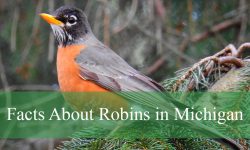

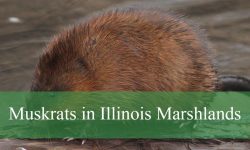
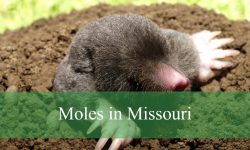

You should have added the Red Velvet ant to your column. Once stung by one you will never forget the pain.
thanks for your info.